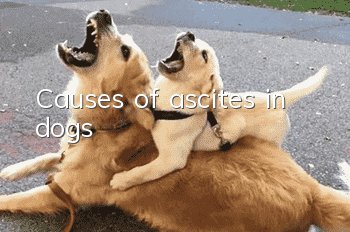Symptoms and Treatment of Periodontitis in Dogs

Symptoms of periodontitis in dogs:
1. Sick dogs salivate a lot, and the saliva is rancid, often mixed with blood.
2. The mouth is sensitive, be careful when eating, chew slowly, and often spit out food suddenly, especially when eating hard food such as bones and fish bones. Over time, the pain may lessen.
3. Oral examination shows that the diseased teeth are loose, and there is often a small amount of pus in the periodontal period. When the gums are squeezed, thick juice or blood can flow out.
4. The mouth and exhaled gas have a rancid smell.
Treatment methods for dog periodontitis:
1. First clean the mouth and affected teeth with normal saline or 2% to 3% boric acid water. If there are ulcers, corrode them with 5% silver borate solution and then clean them.
2. Apply iodine tincture or erythromycin ointment to the affected area.
3. If the gums have become enlarged, excess tissue can be removed by local anesthesia or electrocautery. After general anesthesia, the diseased tooth and the surrounding tartar are scraped.
4. If the teeth are obviously loose, they should be extracted. Postoperative care should be strengthened and antibiotics should be used throughout the body to prevent infection.
5. Rinse the mouth regularly with salt water and provide soft, easily digestible food to facilitate recovery.
6. Pay attention to oral hygiene at ordinary times, and use rubber toys for pets to chew on to improve the disease resistance of teeth.
- What's the matter with dogs digging into their nests?
- How to train a dog to play with a ball? Successful training in just a few steps!
- How to train a small Xiasi hound to be obedient? Training tips for Xiasi hounds!
- What are the disadvantages of raising a Rottweiler? You don’t know yet!
- What are the symptoms of gingivitis in dogs?
- These foods on the New Year’s table can actually threaten your dog’s health! How to feed your dog to have a fat year
- How to correct your dog’s destructive behavior
- How babies and dogs get along
- How to train riot dogs
- Should milk be added to puppy rice?



